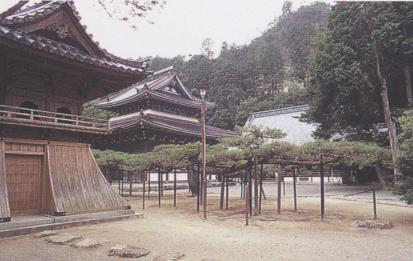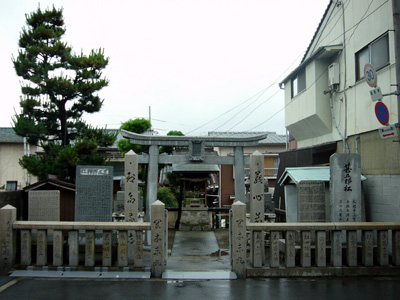Top Introduction to Mihara
History
| Buttsuji Temple was built by the Rev,Guchu Shukyu in 1397. The temple is one of the main Zen seminaries among about 3000 temples in Japan. It has a lot of important cultural assets. |
|
| Zen is one of schools of Buddhism. Zen's main point is meditation. It is to obtain calmness of mind, to attain a state of spiritual enlightment,and to realize the true shelf. When we practise Zen meditation, we have to do "zazen". "Zazen" is one of sitting styles. We sit with our legs crossed and our eyes half-closed. |
|
| The temple is in a quiet setting surrouded by a lot of maple, pine and cedar trees. It is a natural park. It is very beautiful all year round - cherry blossoms in spring, deep greenery in summer, autumn leaves in fall and stillness in winter. So many people all over Japan come to enjoy the natural beauty.  |
|
 M
ost of the land now downtown Mihara was reclaimed.
M
ost of the land now downtown Mihara was reclaimed.In 1700 they started "Miyaoki-Shingai" reclamation work reclaiming land from the sea. It was a large-scale work. The work went smoothly in the beginning. But at the final stage the workers couldn't succeed in closing the mouth of the river, although they put a lot of stones and sand bags in the river. Their efforts were almoot in vain. Then they began talking about "Hitobashira" a human sacrifice. It literally means that to complete the work a man should be buried in the construction spot. Later the retainers in the castle decided to select as a sacrifice a man who would wear "hakama" (like skirt) with a patch the next morning. The magistrate started checking one worker after another and found a man wearing the patched hakama. The man's name was Jingoro. He was an honest and diligent man. He was very surprised and shocked but knew there was nothing forhim to do. At last he was offered a sacrifice to. After that the work was accomplished safe and a pine tree was planted at the place where Jingoro was made a victim. There is also a small shrine there. The pine tree is called "Jingoro-Matsu" pine tree. Once a year Jingoro Festival is held to comfort his soul. It is really a sad story. |
| O
nce there lived the warlord, Takakage Kobayakawa, in Hongo. He gradually came in to power and ruled Mihara, reclaimed some is lands at the month of the Nutagawa river and built Mihara castle. And Mihara developed in to a castle town. At high tide, it looked like it was floating on the sea. So Mihara was also called "Ukishiro" or floating castle. The castle buildings were broken down to make the railway, at the same time. They reclaimed to wand the sea, since then, Mihara has been developed as an industrial city. |
Top
Introduction to Mihara
Everyday customs in Japan
School Life
Fashion
Club Activities
Food